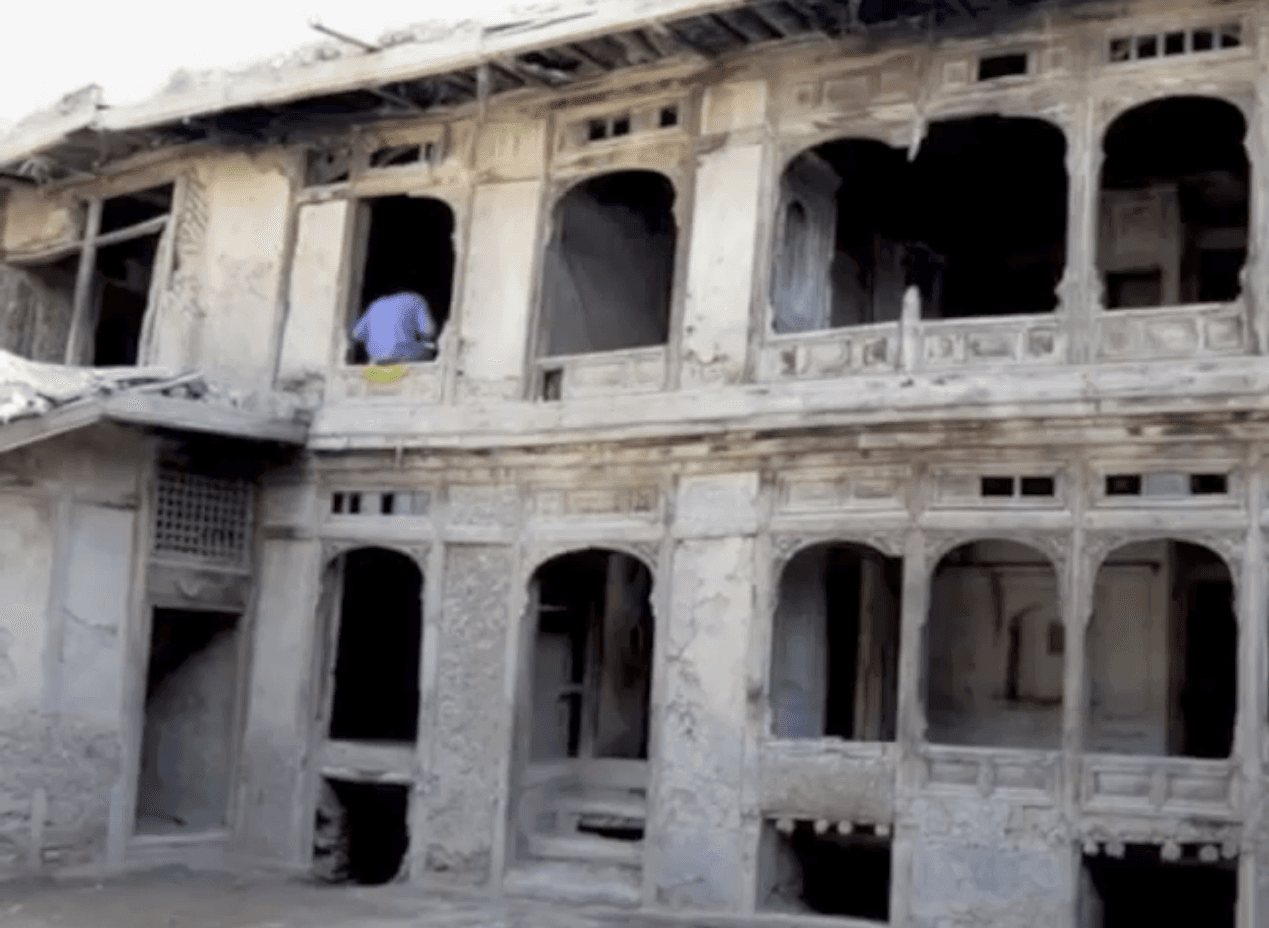Massive restoration project in Kabul reveals buried history
The exterior of a Murhad Khane building. (Youtube screen capture from PRI’s The World)
Story by Laura Spero, PRI’s The World. Listen to audio above for full report.
Five years ago, parts of downtown Kabul, in Afghanistan, resembled a slum, with heaps of garbage and rotted and broken down buildings. Today, the scene is different. The buildings have returned to their former beauty and it’s all because of a massive restoration project.
Rahmatullah Oryakhel spent years designing modern structures in Kabul’s urban landscape, but a few years ago, the civil engineer started coming home covered in mud.
“When I came first here the area was so dirty smell and flies and everything, dust everywhere,” he says.
“Here” is Murad Khane, a historic trade town near a row of tire shops and metal-smiths along the Kabul River. When Oryakhel was hired to help refurbish Murad Khane’s traditional mud and wood buildings in 2006, he wasn’t even familiar with restoration rules, which require using the same materials and construction methods as when these old buildings were first erected a century and a half ago. His first assignment was in a dilapidated building called the “Peacock House,” which had once been an affluent home.
“The building was in such a condition that we used to climb to the top floor single person at a time-we were worried that it would fall down. And when I started surveying, there in the Peacock House we find out that these are built by very clever masons, carpenters joiners and the designers had a very peculiar taste”, says Oryakhel.
“I discovered that that building was really a very precious, fantastic buildings. And that day I thought I should work here for some time to know these buildings and to preserve our history”.
Oryakhel has worked on two buildings in Murad Khane: first the Peacock House, and then, the Great Serai, an elaborate merchant’s home with three courtyards.
“This building is one of the buildings that we don’t have similar like this in the whole Kabul. It’s about 100-150 years old. When you move around the building you find very tricky parts and when a new person came here most of the time they can’t find the way to outside”, he says.
At Kabul Polytechnic University, where Oryakhel studied, the curriculum does cover some traditional Afghan building styles, but not many. Murad Khane was a new challenge for him.
This is a lot of time-taking. First you have to do a lot of research to repair a small piece of the building — so you have meet the old people in the area to find out who worked this, which mason. You cannot plan exactly the time in which you will finish because when you starting working, excavating, you find out that something else is also wrong. You have to repair that also.
Read the rest of this story and view a slideshow on The World website.
————————————————————–
PRI’s “The World” is a one-hour, weekday radio news magazine offering a mix of news, features, interviews, and music from around the globe. “The World” is a co-production of the BBC World Service, PRI and WGBH Boston.
We want to hear your feedback so we can keep improving our website, theworld.org. Please fill out this quick survey and let us know your thoughts (your answers will be anonymous). Thanks for your time!
